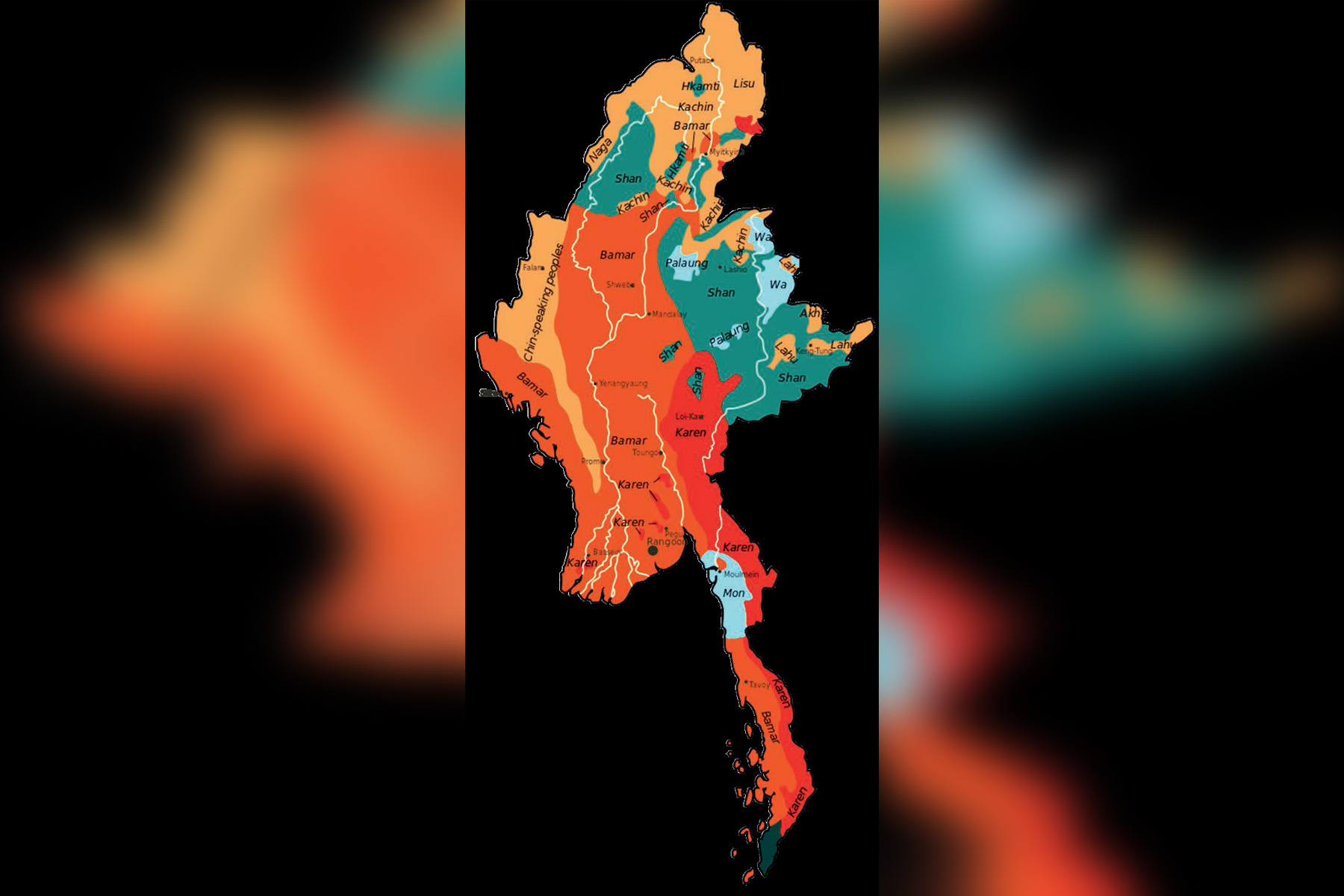A Land of medium size now called “Myanmar” is a geographical entity founded by terrestrial and aquatic borders – land and seas. There are many archipelagoes – a collection of islands and islets along the coasts.
Based upon the pantheological, geological and archeological evidence above ground, underground and under aquatic bodies inland and seas, scientists across the world had reached a consensus that “Myanmar” is one of the cradles of mankind. Fossils of Anthropithicus Erectus discovered in the Pondaung Area near Monywa, upper Myanmar, was well known as Pondaung Primate. Stone tools and weapons of Paleolithic Age in Upper Myanmar (Anya Desa) were tested in the laboratories and confirmed by scientists led by Dr Movius and Dr de Terra brought honour of the Anyathian culture unanimously given by world’s scientists. Subsequent findings and discoveries led to Mesolithic Age (Middle Stone Age) and Neolithic Age (New Stone Age) during which our ancestors had passed to advanced civilization – food gathering to food producing and wandering solitary life to cave dwelling community settlements.
Padalin Caves in Southern Shan States are wellknown site of our Neolithic Age settlement among other similar sites across the country.
Next either by chance or by digging, evidence of Bronze Age settlements were exposed Geologists and Metalogists jointly opined that Myanmar ancestors reached Bronze Age in locality. Nyang Gan near Monywa seemed to be the birth place of this age and copper mines exist in our country.
The entire Pyu settlements across the country with their large city states Vishnu, Sri Kestiu and Halin, Maung Maw and Waddi tell us the peak our ancestors had reached in Iron Age. From that date to the last day of our king we had remained in Iron Age, in spite of attempts to reach Steel Age at the turn of the 19th century.
After the glance through the above background let us take a brief study of our ethnic races. Anthropologists have classified human races of the world into three broad categories 1. Mingalord 2. Caucasus and 3. Negroid based upon the physical features and cultural characteristics with many species, sub-species and variations under the category of Mongoloid, Myanmar ethnic nationals come.
They are the direct descendants of our Anthropithecus Erectus (Ponduang Primate) with their own Anyathian Culture ( Paleolithic Age Culture) and among them are those who are descendants of the Myanmar Central Asiatic mixed blood. In quest of green pastures where the water is clear and grass is green, Central Asiatic people of Mogoloid categories moved into Myanmar. There were other causes of their migration into Myanmar, such as tribal conflicts, love of adventure and human curiosity. Due to the impassable snow capped mountain ranges branched out from the main Himalayas, their movements took along the north-east, north-west valleys and rivers. When they found new pastures they settled and lived with and inter-married with indigenous Myanmar producing the ancestors of today Myanmar ethnic nationalities. The following is the family tree constructed by world anthropologists based upon physical and cultural families and characteristic but mainly upon language.
So we have officially listed 135 ethnic races. Every ethnic race has the following physical appearances and cultural similarities and identities
1 Physical features, height, skin colour, colouring hair, eyes, the style of movement especially walking etc.
2. Language-basic words for family members father, mother, son, daughter, grandfather, grandmother and pet and farm animals, trees and plants, love, hate, life, birth, death, friend, foe, sun, moon, day, night, wind, rain etc. Numbering one, two, three etc.
3.Social activities and cultural activities – dance, song, music etc
Economic activities – hunting, ploughing, harvesting, fishing, etc.
Ritual and festivals, etc.
Next writing – pictorial, phonetic or alphabetical.
Social orgnization – family, tribe, village, district, city state, state empire, etc.
Taboo precedents, tradition, custom, etc.
Culinary act – cooking, vegetable, meat, wild games, or domestic animal pork, beef, fish, fowls and birds.
Believe system, animism, ancestor worship, Nat spirits, Buddhist, etc.
From womb to tomb, from the time of being conceived in the womb of mother to the time of being buried in the tomb when died, the entire routine life style of each ethnic national race have been recorded by tradition and custom since the begin of their history. Therefore our ethnic nationalities have their own ethnic identity.
Based upon these facts, anthropologists have unanimously drawn the above Myanmar national ethnic Family Tree.
We have now officially listed altogether 135 ethnic nationalities. We have set up a separate Ministry of Myanmar Ethnic Affairs, looking after their welfare and general development. In addition to schools, where their languages, literature, culture are taught promoted by both Government and NGOs.
Yearly commemorated the Union Day 12 Feb is the commemoration of the Frist Myanmar National Ethnic Union achieved at Pinlong in the Shan State by then leader led by Bogyoke Aung Sun and his colleagues and the ethnic leaders after he and his colleagues had successfully performed this political duties for national consolidation and unification across the country.
All agreed unanimously to form the Union of Myanmar of all national ethnic nationalities and to rebuild our New Nation of Modern time.
Today activities, political, economic, social and culture for the second Pinlong Conference 21 st century Pinlaung Conference are in full swing. Every member of all our ethnic nationalities is bound to take his part in it for rebuilding of our country for us and for our offsprings.
By Maha Saddhamma Jotika Dhaja, Sithu Dr.Khin Maung Nyunt



